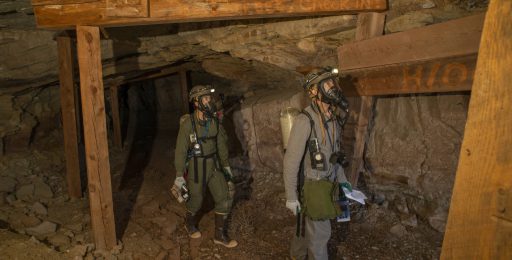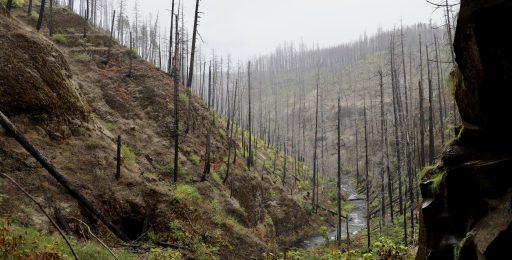Loss of roosting, foraging, and available drinking water are some of the biggest threats to bat populations worldwide
Developing partnerships and collaborations to integrate regional, national, and international efforts is crucial to our conservation mission. Our habitat protection and restoration work focuses on restoring habitat in critical areas, protecting colonies of bats, and abating threats at known roost sites.
Read below to learn more about our four current operations and goals.
Conservation of Public Lands
Implement bat conservation on 258 million acres managed by the US Government
More
Habitat Protection & Restoration Team
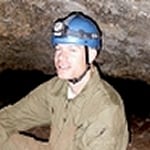
Jason Corbett, M.S. – Director, Habitat Protection & Restoration
I’ve been happily working with wildlife since the tender age of 8 when an Emmy Award winning wildlife cinematographer moved in next door and hired my brother and I to work with him on his wildlife films for National Geographic, the BBC, Discovery Channel, etc.
Several jobs later I am ecstatic to be working hard on conserving a taxa I greatly admire, bats, and my favorite type of habitat on the planet; all things under the Earth. These dark spaces; caves, mines, cracks, crypts, ossuaries, sinkholes, cenotes, springs, and many others provide shelter, refuge, and critical habitat for many species of plants and animals.
By working to protect subterranean bats and their habitat, I’m able to help protect not only the amazing places they call home, but also all of the other plants and animals that need these spaces. It is hard work but I love it!
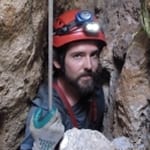
Shawn Thomas – Subterranean Team Lead
Shawn Thomas joined the BCI staff in July, 2014. As Projects Manager for the Subterranean Program, Shawn coordinates projects involving inventories and monitoring of cave and mine-roosting bats. These projects involve working with diverse partners, ranging from federal agencies to private mining companies.
Prior to working for BCI, Shawn specialized in cave management for the National Park Service, having worked for several cave parks in the western U.S., including Carlsbad Caverns National Park (NM), Lava Beds National Monument (CA), Oregon Caves National Monument (OR), Great Basin National Park (NV), and Jewel Cave National Monument (SD).
Outside of work, Shawn’s time is focused on exploring and mapping caves, with active projects in Arizona (Grand Canyon National Park caves), New Mexico (Lechuguilla Cave, Fort Stanton-Snowy River Cave), and Montana (Bob Marshall Wilderness caves).
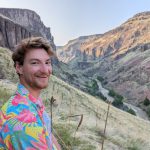
I grew up in small town Seward, Alaska. Having millions of acres of national forest as a backyard made me fall in love with the natural world. When I wasn’t running around the mountains in my backyard, I found myself pouring over maps dreaming of where I could explore next. This interest in maps lead me to study Geography with a concentration in GIS at the University of Wyoming.
After graduating, I went on to work for the USGS in Colorado on the 3D Elevation Program (3DEP) as a cartographer and eventually the Product Generation Supervisor. 3DEP’s goal is to survey the entire US with lidar data in 8 year cycles. As a cartographer, I assisted in producing and oversaw the production of the standard elevation products that are available for download on The National Map.
As it was for many people the pandemic changed things for me. I moved to Idaho (currently residing in Boise) with my partner and started working for Frontier Precision as their GIS Project Manager. Frontier exposed me to a ton of mapping technology and use cases, including mapping vertical assets of a sewer treatment facility and transmission corridor mapping with drones and lidar.
Now as the Geospatial Team Lead, I have the opportunity to take my experience and apply it to an important cause!
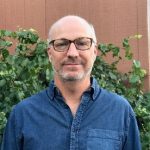
John Moeny – Restoration Team Lead
John Moeny was hired as BCI’s Restoration Team Lead in September 2023 and coordinates development and implementation of restoration projects that benefit bats and numerous other taxa in the southwest and beyond.
Before joining BCI, John spent a decade working on stream restoration and watershed protection for the New Mexico Environment Department, and seven years with Grand Teton National Park as their restoration program manager. With an undergraduate degree in Botany and a Masters degree in Rangeland Ecology he spent many seasons as a field technician and firefighter throughout the west with the US Geological Survey, US Forest Service, National Park Service and Arizona Game and Fish.
John grew up in the San Luis Valley of southern Colorado (home to a summer bachelor colony of 250,000 Mexican free-tail bats) and owes his interest in the outdoors and conservation to his family who spent summers on extended camping trips and his grandmother who taught him the names of native plants at an early age. John lives in Silver City, New Mexico with his wife and dog pack and can be found exploring the remote corners of the southwest, preferably on two wheels.
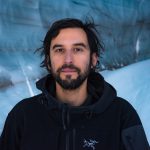
Josh Hydeman joined Bat Conservation International part-time in October 2021, becoming a full-time staff member in September 2022. He has participated in and led subterranean habitat assessment and evaluation projects for the Bureau of Land Management, Forest Service, National Park Service, and the Department of Energy.
Prior to joining BCI, Josh worked as a freelance photographer with a specialization in cave research and cave exploration expeditions. His photography assignments have brought him to coffee farms in Ethiopia, the deepest cave in the western hemisphere in Oaxaca, Mexico, and to the volcanic glacier caves of Mount Hood.
Josh’s work has been published by National Geographic, Outside Magazine, Outdoor Photographer, The Explorer’s Club Journal, and used by Petzl, Mountain Hardwear, Garmin, Arcteryx and Subaru. His awards include Best in Show at the National Speleological Society’s Photo Salon and a feature in National Geographic’s special issue, “100 Best Photos: Iconic Images from this Century.”
For more on Josh and his work can be found here
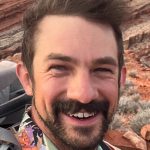
Dillon Metcalfe – Subterranean Safety Lead
Dillon works on the subterranean team, spending many of his working hours squirming around in caves and abandoned mines all over the American West. This close-up look at bats and their habitat has blossomed into an ever-deepening curiosity about these diverse little fliers. Where do they roost? How do they organize socially, if at all? What do they eat?
These are the questions that drive Dillon deeper and higher into the underground places he goes. He’s worked with Bat Conservation International since the summer of 2016.
Prior to working with BCI, Dillon guided backpacking trips and worked as an NPS ranger in the Grand Canyon, directed conservation corps members on public lands projects, instructed SCUBA students in Thailand, worked in maintenance at Denali National Park in Alaska, and so on. This diverse background has equipped Dillon with a versatile and adaptable skill set that’s applicable in many situations.
Dillon lives in Flagstaff, Arizona. In his free time he enjoys mountain biking and whitewater boating.
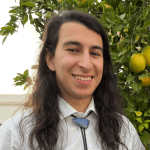
Harrison Tamayo – Subterranean Specialist
Harrison joined BCI with the Subterranean Team as a part-time technician in July of 2022. In October of 23’ he became a full-time Subterranean Specialist. Most of his job consists of going into abandoned mines and conducting biological surveys, determining if these features host bat habitat. In addition to surveys, he’s also done LIDAR scans, maternity roost monitoring, white-nose syndrome surveillance, as well as cave and mine inventory.
Harrison’s passion for the underground world started when he arrived in the Sonoran Desert. He joined the Arizona Outdoors Club where he got the chance to explore a sulfuric hypogene cave and help collect and study a unique community of microorganisms inhabiting the recently discovered portions of that cave. This lit a fire within Harrison and shortly thereafter he linked up with the Central Arizona Grotto (part of the National Speleological Society) and started going on every caving trip he could. He developed a love for exploring underground spaces and mapping them with his friends. Eventually he got in touch with a graduate student from Dr. Marianne Moore’s Bat Lab at Arizona State University and started joining them on hibernacula surveys. The purpose of these surveys was to establish some baseline numbers for hibernating bat populations in a few northern Arizona caves and to learn about their respective hibernation ecology prior to the arrival of WNS in the state. This experience, over multiple years, left a lasting impact on Harrison and solidified his desire to primarily work in the field and in nature. Since graduating from ASU with a degree in Biological Sciences, Harrison has devoted himself to learning about the natural environment of Arizona and how we can best conserve and protect this beautiful landscape.

Corrie Harrison – Subterranean Specialist
Corrie joined BCI’s subterranean team in June 2022 and worked in a part time capacity until 2024 where she then became a full time staff member. She has always had a passion for animals and the outdoors and in 2015 graduated from Humboldt State University with a degree in Wildlife Biology. Throughout college and after graduating she worked many different seasonal jobs doing surveys for a diverse array of wildlife species. These surveys ranged from looking for birds, amphibians, reptiles, small mammals, mesocarnivores, and of course why this organization exists, bats!
Corrie got her first bat technician position in 2017 working for a graduate student. This project was looking at northern long-eared bats and fringed myotis summer roosting sites around Jewel Cave National Monument in South Dakota. After spending two summers chasing bats around the southern Black Hills, Corrie knew that she wanted to continue with some aspect of her career helping to conserve these amazing animals.
While working in the Black Hills, Corrie met her wonderful husband, Dillon. They now live in Spokane, WA and (along with their pup Azsuna) can be found hiking, backpacking, climbing, and snowboarding throughout the Inland Northwest.
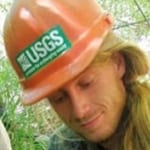
Jackson Bain – Assistant Team Lead, Subterranean
Jackson has been working with BCI’s Subterranean Program since 2017. On the subterranean team, Jackson assists in coordinating projects with federal agencies and private partners inventorying abandoned mines for bat habitat. He graduated from Northern Arizona University with a Bachelor’s degree in Environmental Science and Wildlife Ecology. His professional career has led him to chasing wildlife all over the country, working on research and management projects from Alaska down to Mexico.
Jackson is a proud Arizona local. He became passionate about wildlife at a young age, inspired by the Sonoran Desert surrounding Tucson. He encountered his first bats while exploring abandoned mines in the desert behind his childhood neighborhood. In his spare time, you can find Jackson exploring the vast canyons and mountains of the Southwest, often with his pitbull pal, Ria, by his side.
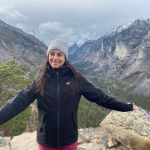
Bianca Giunti – GIS Analyst
Bianca Giunti joined BCI in January 2025. In her role, she manages, analyzes, and visualizes geospatial data, establishes and improves geospatial workflows, and provides support for habitat protection and restoration field crews.
Born and raised in Argentina, BG earned a Bachelor’s degree in Environmental Engineering from the Pontificia Universidad Católica Argentina. In 2022, she moved to Missoula (MT) where she obtained a Master’s degree in Geography with a concentration in GIS from the University of Montana.
Some of her previous professional experience includes research focused on wetland conservation. Her graduate thesis examined the transformation of the Laguna Melincué Wetland, and she conducted wetland mapping for the U.S. National Wetland Inventory at the O’Connor Center for the Rocky Mountain West. Additionally, she gained valuable field experience as a volunteer at Los Glaciares National Park in Patagonia, Argentina, and has led student field trips in Montana outdoors for the Wilderness Institute at the University of Montana.
In her free time, she enjoys cooking, skiing, swimming, water coloring, and river surfing.
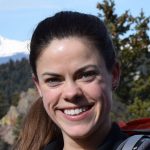
Autumn Cool – Cultural Resource Coordinator
Autumn Cool joined BCI in September 2021. As an archaeologist and BCI’s Cultural Resource Specialist, her role is to identify, document, and assess the material culture left behind by people as they interact with a landscape. She strives to find a balance between preserving significant cultural heritage sites and protecting important bat habitats.
Autumn attended graduate school at the University of Arkansas where she specialized in archaeological remote sensing and geophysical prospecting. She conducted original research into aerial thermography and worked on several geophysical surveys, including at a Bronze Age site in Iraqi Kurdistan. After receiving her masters in anthropology, Autumn worked in the private sector for five years, documenting prehistoric and historic sites across Colorado and surrounding states. Recently, she has conducted extensive research into historical mining and has worked on several mine closure projects. Originally hailing from Washington state, Autumn lives in Colorado with her husband and two rabbits. She loves hiking, podcasts, and science fiction.

Aaron Sidder – Compliance & Ecology Coordinator
Aaron Sidder joined BCI in May 2019. As the Compliance & Ecology Coordinator, he works closely with the Bureau of Land Management, U.S. Forest Service, Department of Energy, and other federal partners to plan and coordinate bat habitat improvements at abandoned mines and degraded waterways around the American West.
Aaron has over 16 years’ experience as an ecologist and environmental scientist. He is an experienced field ecologist whose research has taken him to the tropical forests of Ecuador, the Everglades, southwestern deserts, and the top of the Rocky Mountains. Aaron is an alumnus of the AAAS Mass Media Science & Engineering Fellowship program and continues to moonlight as a science journalist with publications at National Geographic, National Geographic Kids Magazine, Smithsonian SmartNews, 5280 Magazine, the Santa Fe Institute, and Eos, the publication of the American Geophysical Union.
Aaron lives in Denver, Colorado, with his wife and dog. He enjoys all manner of bikes, thumping bass lines, and fantasy novels.

Zachary Warren, M.S. – Cliff Ecology Field Lead
Zac manages cliff hibernacula surveys and white-nose surveillance monitoring at Zion National Park, Cedar Breaks, and Pipe Springs National Monument. This work involves spring swabbing surveys, soliciting local climbers for bat observations, and scaling cliff faces in search of roosts and hibernacula.
This project allows him to combine his passion for rock climbing with his professional expertise in bats. He began working with bats in 2012 while working for the National Park Service and went on to receive his M.S. studying the northern long-eared bat in Nebraska.
He received his B.S. from Ball State University in wildlife Biology and his M.S. from the University of Nebraska – Lincoln in applied ecology. He also has 11 years of climbing experience, 8 years of technical roped rescue experience, and is currently a member of Zion’s technical rescue team. He is drawn to bat research because of the space to find novel approaches to answering difficult questions.
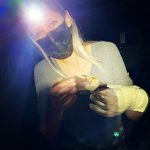
Brianna Mann joined BCI as a part-time technician for the Subterranean and Restoration teams in March 2022 before transitioning into a full-time role as a Restoration Specialist in November 2022. Prior to this, Brianna worked in natural history collections, as a springs biologist in the Southwest, and monitored wildlife (including acoustic monitoring of bats) throughout the western United States.
In her current role as Restoration Specialist, Brianna hopes to put her life-long passion for wildlife ecology to good use by protecting habitats for bats and other wildlife, restoring and stabilizing vital natural resources, and monitoring the impacts of habitat changes on wildlife populations. She believes that connection and collaboration are the gateways to successful conservation of the world’s biodiversity.
Brianna lives in Flagstaff Arizona, and in her spare time enjoys all things outdoors, reading, writing, dancing, and a good local brew.
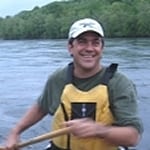
Dan Taylor, M.S. – Sr. Restoration Specialist
Dan Taylor is a Senior Restoration Specialist with BCI’s Habitat Protection and Restoration (HP&R) Program and has more than 30 years of experience working on a wide range of wildlife and conservation issues in the U.S., Central America, and Africa. Dan has been with BCI for 23 years, previously directing its Bats and Mines, Bats and Forests, and Water for Wildlife initiatives. Dan’s background as a USDA-Forest Service biologist in Arizona, Montana, and Oregon, and years of experience facilitating collaboration between BCI and local, state, and national government partners made him well-suited to lead BCI’s HP&R habitat restoration initiatives.
The HP&R Program is working with the primary agencies responsible for natural resource management in North America and private landowners to ensure the incorporation of bat conservation into key policy, planning, and land management actions. Dan authored BCI’s Forest Management & Bats publication and co-authored BCI’s Bats and Mines and Water for Wildlife handbooks with Dr. Merlin Tuttle.
He is a member of The Wildlife Society, and the Arizona, New Mexico, and Western Bat Working Groups, and was a founding member of the Society for Conservation Biology.
Prior to his work with BCI and the Forest Service, Dan was the first director of the Cockscomb Basin Jaguar Preserve while serving as a Peace Corps Volunteer in Belize, Central America, and previously worked seasonally on several wildlife projects involving wolves, brown and black bears, European badgers, and northern and Mexican spotted owls.
Dan holds a bachelors degree in Wildlife Biology from the University of Montana and a masters of science in Forestry from Northern Arizona University.
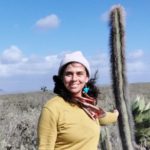
Zasha was born in Bremerton, WA. She moved out to Arizona on a whim and received her B.S. in Biology from NAU in 2018. At NUA she conducted research on freshwater food webs. She initially followed her fisheries passion and, for a short while, conducted snorkel surveys across Arizona and chased humpback chub through the Grand Canyon. Zasha eventually moved on to botany work and has explored much of the Southwest conducting surveys and participating in restoration efforts with local nonprofits.
She joined BCI in October 2023 as a Restoration Technician and has been a Restoration Specialist since January 2024. Through restoration, she hopes to build broader restoration communities and deepen her understanding of the many ways to be in relationship with land.
Zasha lives in Tucson, AZ. She enjoys exploring mountains and deserts, botanizing, gardening, and breathwork. She is a watercolor painter who wants to do more sculpture. She is Kanaka maoli on her mother’s side and tries to honor that in her work and general lifestyle.
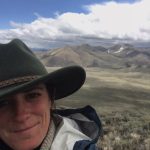
Elizabeth joined the BCI Restoration Team in August 2024. As the Southern New Mexico Project Manager, she is tasked with coordinating and implementing post-fire restoration efforts in the Gila National Forest.
Elizabeth has spent the better part of the last twenty years doing conservation and restoration work throughout the western United States. Her early professional years were spent in rugged and remote parts of the northern Rockies, building trails, digging fire lines, and occasionally pulling a crosscut. In 2013 she received a B.S. post-baccalaureate degree from the Wildland Restoration program at the University of Montana. Over the last 10 years she worked in the private and public sectors overseeing revegetation and restoration projects, collecting native seeds, and conducting a variety of botanical surveys.
Elizabeth believes restoration is a collaborative and adaptive process that includes reconciling human relationships to one another and the systems in which we live and work. She is a self-declared plant nerd and can often be found aimfully wandering through the mountains or desert with her four-legged friends.

Amalia Kenward – New Mexico Cultural Resource Specialist
Amalia Kenward joined BCI in May of 2023 as the New Mexico Cultural Resources Specialist. Her love of the subterranean goes back much further. Born and raised in New Mexico, she worked her first archaeology job at age twelve assisting in the survey of the abandoned Midnight Mine in northern New Mexico. She attended Boston University, receiving her Archaeology BA, with honors, with her undergraduate thesis Heart of the Earth: Ancient Maya Cave Use in the Middle Sibun Valley, Belize, Central America. Returning to New Mexico and working in a variety of roles in cultural resource management, she continued to dabble in the dark, working in Guatemala with the Vanderbilt Upper Pasión Archaeological Cave Survey, also archiving and illustrating for the Ahau Foundation, all while cultivating her interest in southwestern cave archaeology (Artifact – Mimbres Bowl – Archaeology Magazine Archive). She attended University of New Mexico, receiving a Masters in Anthropology, focused in archaeology, and a Graduate Certification in Historic Preservation and Regionalism from the School of Architecture and Planning. Amalia is excited to apply her over twenty-five years of archaeological and cultural resource management experience to the BCI team.
We have a cadre of highly trained and very dedicated conservationists that are willing to push, and push very hard, to accomplish our mission.
Director, Habitat Protection and Restoration
